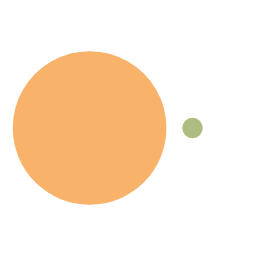jDK1.7引入了新的IO操作类,java.nio.file包下的Path接口和Files类。然而网上的好多教程仍然用着比较老旧的File类。这里整理一下新的用法。
创建文件和目录
创建文件和目录非常简单。我们可以使用Files类的createFile()方法和createDirectory()方法来创建文件和目录
import java.nio.file.Files;
import java.nio.file.Path;
import java.nio.file.Paths;
import java.io.IOException;
public class CreateFileAndDirectory {
public static void main(String[] args) throws IOException {
Path pathToFile = Paths.get("example.txt");
Path pathToDir = Paths.get("exampleDir");
Path pathDirectories = Paths.get("java\exampleDir\pathDirectories\dir");
try {
Files.createFile(pathToFile);
} catch (IOException e) {
throw new RuntimeException(e);
}
try {
Files.createDirectory(pathToDir);
} catch (IOException e) {
throw new RuntimeException(e);
}
try {
Files.createDirectories(pathDirectories);
} catch (IOException e) {
throw new RuntimeException(e);
}
}
}
|
上面的代码会创建一个名为“example.txt”的文件和一个名为“exampleDir”的目录。如果文件或目录已经存在,这些方法将抛出异常。
createDirectories方法会创建多级目录,上级目录不存在的话,直接创建。
写入文件
Java包含多种方式来写入文件。我们可以使用Files类的write()方法来将数据写入文件。
import java.nio.file.Files;
import java.nio.file.Path;
import java.nio.file.Paths;
import java.io.IOException;
import java.util.Arrays;
public class WriteToFile {
public static void main(String[] args) throws IOException {
Path path = Paths.get("example.txt");
byte[] bytes = "Hello, world!".getBytes();
try {
Files.write(path, bytes);
} catch (IOException e) {
throw new RuntimeException(e);
}
String text = "Hello, world!";
try {
Files.write(path, text.getBytes());
} catch (IOException e) {
throw new RuntimeException(e);
}
Iterable<String> lines = Arrays.asList("line 1", "line 2", "line 3");
try {
Files.write(path, lines);
} catch (IOException e) {
throw new RuntimeException(e);
}
}
}
|
上面的代码将数据写入“example.txt”文件。我们可以使用write()方法将字节数组、字符串或字符串列表写入文件。
读取文件
Java包含多种方式来读取文件。我们可以使用Files类的readAllBytes()方法、readAllLines()方法或newBufferedReader()方法来读取文件。
import java.nio.file.Files;
import java.nio.file.Path;
import java.nio.file.Paths;
import java.io.IOException;
import java.util.List;
public class ReadFromFile {
public static void main(String[] args) throws IOException {
Path path = Paths.get("example.txt");
byte[] bytes = Files.readAllBytes(path);
System.out.println(new String(bytes));
List<String> lines = Files.readAllLines(path);
BufferedReader reader = Files.newBufferedReader(path);
String line = null;
while ((line = reader.readLine()) != null){
}
reader.close();
|
删除文件或目录
删除文件或目录可以使用Files类的delete()方法。
Path fileToDeletePath = Paths.get("fileToDelete.txt");
try {
Files.delete(fileToDeletePath);
System.out.println("文件删除成功");
} catch (IOException e) {
System.out.println("文件删除失败");
}
Path dirToDeletePath = Paths.get("dirToDelete");
try {
Files.delete(dirToDeletePath);
System.out.println("目录删除成功");
} catch (IOException e) {
System.out.println("目录删除失败");
}
try {
Files.deleteIfExists("dirToDelete/dir");
} catch (IOException e) {
throw new RuntimeException(e);
}
|
复制文件
Path sourceFilePath = Paths.get("sourceFile.txt");
Path targetFilePath = Paths.get("targetFile.txt");
try {
Files.copy(sourceFilePath, targetFilePath,StandardCopyOption.REPLACE_EXISTING);
System.out.println("文件复制成功");
} catch (IOException e) {
System.out.println("文件复制失败:" + e.getMessage());
}
|
复制目录
Path sourceDirPath = Paths.get("C:/Users/username/Desktop/sourceDir");
Path targetDirPath = Paths.get("C:/Users/username/Desktop/targetDir");
try {
Files.walkFileTree(sourceDirPath, new CopyFileVisitor(sourceDirPath, targetDirPath));
System.out.println("目录复制成功");
} catch (IOException e) {
System.out.println("目录复制失败:" + e.getMessage());
}
|
CopyFileVisitor
import java.io.IOException;
import java.nio.file.*;
import java.nio.file.attribute.BasicFileAttributes;
public class CopyFileVisitor extends SimpleFileVisitor<Path> {
private final Path sourceDir;
private final Path targetDir;
public CopyFileVisitor(Path sourceDir, Path targetDir) {
this.sourceDir = sourceDir;
this.targetDir = targetDir;
}
@Override
public FileVisitResult preVisitDirectory(Path dir, BasicFileAttributes attrs) throws IOException {
Path targetPath = targetDir.resolve(sourceDir.relativize(dir));
try {
Files.copy(dir, targetPath);
} catch (FileAlreadyExistsException e) {
if (!Files.isDirectory(targetPath)) {
throw e;
}
}
return FileVisitResult.CONTINUE;
}
@Override
public FileVisitResult visitFile(Path file, BasicFileAttributes attrs) throws IOException {
Path targetPath = targetDir.resolve(sourceDir.relativize(file));
Files.copy(file, targetPath, StandardCopyOption.REPLACE_EXISTING);
return FileVisitResult.CONTINUE;
}
}
|
在preVisitDirectory()方法中,我们将源目录下的子目录逐个创建到目标目录中。在创建过程中,我们使用Files.copy()方法将目录复制到目标目录中。由于目标目录可能已经存在,因此我们在Files.copy()方法中使用了FileAlreadyExistsException异常进行处理。
在visitFile()方法中,我们将源目录下的文件逐个复制到目标目录中。在复制过程中,我们使用Files.copy()方法将文件复制到目标目录中,并使用StandardCopyOption.REPLACE_EXISTING选项替换现有文件。
移动或重命名
try {
Files.move(Paths.get("source.txt"),Paths.get("target.txt"), StandardCopyOption.REPLACE_EXISTING);
} catch (IOException e) {
throw new RuntimeException(e);
}
|
遍历目录
第一种遍历方式
Path start = Paths.get("sourceDir");
int maxDepth = Integer.MAX_VALUE;
try {
Files.walk(start, maxDepth).forEach(System.out::println);
} catch (IOException e) {
throw new RuntimeException(e);
}
|
该方法接受三个参数:
start:表示要遍历的根目录的路径。
maxDepth:表示要遍历的最大深度。如果maxDepth为0,则只遍历根目录,不遍历其子目录。如果maxDepth为正整数,则遍历根目录和所有深度不超过maxDepth的子目录。如果maxDepth为负数,则遍历根目录和所有子目录。
options:表示遍历选项。可选项包括FileVisitOption.FOLLOW_LINKS和FileVisitOption.NOFOLLOW_LINKS。
如果选择FOLLOW_LINKS选项,则遍历符号链接指向的目录;
如果选择NOFOLLOW_LINKS选项,则遍历符号链接本身
第二种遍历方式
Path dir = Paths.get("/home/user/newdir");
for (Path entry : Files.list(dir)) {
System.out.println(entry.getFileName());
}
|
获取文件属性
try {
Path path = Paths.get("F:\\java\\2.txt").toAbsolutePath();
System.out.println("文件是否存在: " + Files.exists(path));
System.out.println("是否是目录: " + Files.isDirectory(path));
System.out.println("是否是可执行文件: " + Files.isExecutable(path));
System.out.println("是否可读: " + Files.isReadable(path));
System.out.println("判断是否是一个文件: " + Files.isRegularFile(path));
System.out.println("是否可写: " + Files.isWritable(path));
System.out.println("文件是否不存在: " + Files.notExists(path));
System.out.println("文件是否隐藏: " + Files.isHidden(path));
System.out.println("文件大小: " + Files.size(path));
System.out.println("文件存储在SSD还是HDD: " + Files.getFileStore(path));
System.out.println("文件修改时间:" + Files.getLastModifiedTime(path));
System.out.println("文件拥有者: " + Files.getOwner(path));
System.out.println("文件类型: " + Files.probeContentType(path));
} catch (IOException e) {
throw new RuntimeException(e);
}
|


